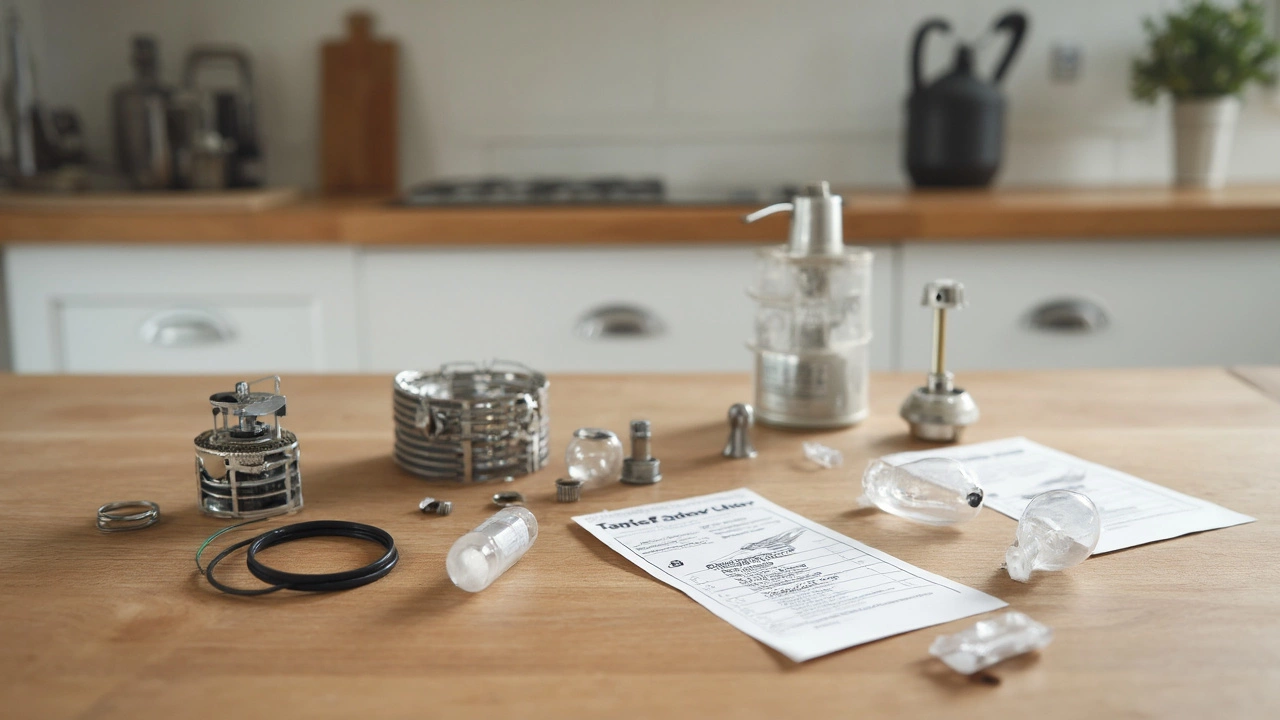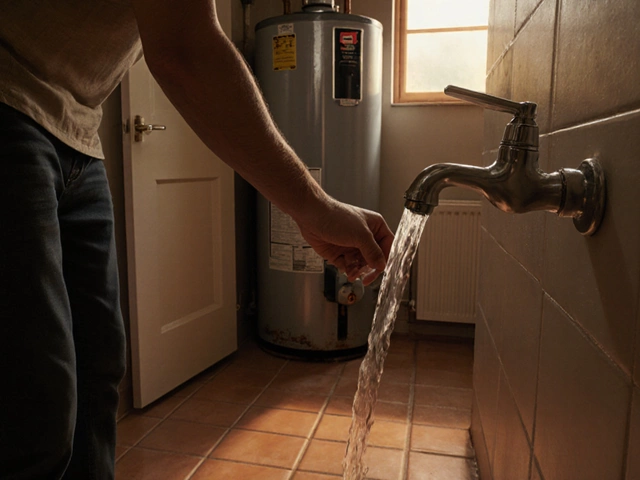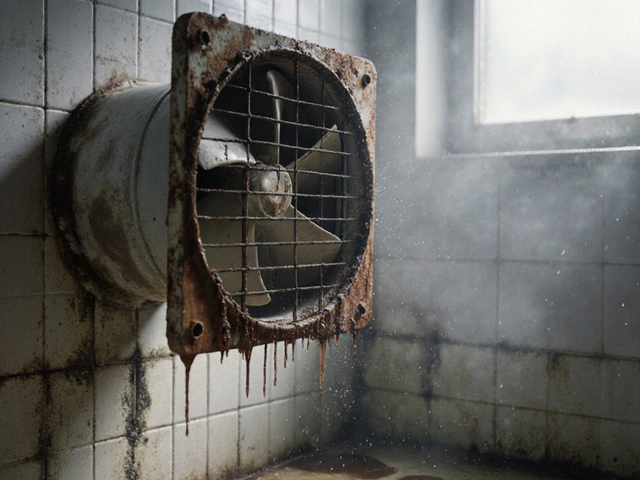Refrigerators don’t just quit out of nowhere. Usually, you’ll notice small things first: the milk smells off, the veggies wilt, or maybe you hear strange noises coming from the back. The most common trouble? A worn-out door seal, also called a gasket. If your fridge won’t stay cold, this little rubber strip might be the culprit.
Why does the seal matter? If it’s cracked or loose, warm air slips in and cold air leaks out, making your fridge work overtime. That means higher energy bills and food that spoils faster. Open up your fridge and run your hand along the edge. Feel any cold air escaping? See any tears? If yes, your seal probably needs some attention.
Here’s a quick test anyone can do: shut the fridge door on a dollar bill. If you can pull it out easily, the seal’s not tight enough. Don’t panic—swapping out a gasket is usually simple and doesn’t cost much. Most hardware stores can order the right one if you know your fridge’s model. This small repair can save you hundreds down the road.
- Why Fridges Usually Break Down
- The #1 Problem: Broken Door Seals
- Quick Fixes and Prevention Tips
- When to Call a Pro
Why Fridges Usually Break Down
Most fridge troubles start with a handful of repeat offenders. Think about it—fridges run 24/7, so it’s no surprise stuff wears out. The main reason for breakdowns is that simple parts do a ton of work. Over time, they just get tired.
The door gasket (the rubber seal) is top of the list. It stops cold air from leaking out. When it cracks or comes loose, your fridge loses its cool and your electric bill climbs. A bad gasket can even force your fridge’s motor to run way more than it should, which shortens its life.
Another biggie is dirty condenser coils. These coils, usually on the back or underneath, help get rid of heat. When they’re coated in dust, the fridge gets hotter and has to work harder. This can lead to problems like poor cooling or the compressor burning out.
Faulty thermostats and sensors also make the list. If the sensor isn’t reading temperatures right, your fridge could stay too warm or get too cold and freeze your veggies. Last, don’t forget fans—if they stop spinning, air doesn’t move, and cooling isn’t even across shelves.
- fridge repair gets called for door seal problems, dirty coils, or broken fans the most.
- Big temperature swings, odd noises, or water under the fridge often point to these same issues.
If you catch these problems early—like cleaning the coils every six months or checking the door seal—most fridges will keep running for years without major trouble.
The #1 Problem: Broken Door Seals
If your fridge isn’t cooling right, look at the door seal—this is hands down the most common fridge repair that people face. These rubber gaskets do all the heavy lifting by trapping in cold air and keeping moisture and smells out. Over time, repeated use, food spills, and regular cleaning can make them crack, warp, or peel away from the edge.
Why does this matter so much? If the seal isn’t perfect, your fridge compressor has to kick in much more often, which means more wear and higher electricity bills. A U.S. Department of Energy fact: leaky seals can waste up to 11% more energy than a well-sealed fridge. That’s not just money down the drain—it’s also extra strain on your appliance, making it likely other parts will fail sooner.
Common signs your seal is going bad:
- You notice condensation or even small water puddles near the fridge door.
- There’s mildew or black gunk building up on the gasket.
- The door doesn’t feel like it “sticks” when you close it.
- You feel cold air streaming out when the fridge is shut.
Curious how often seals go bad? On average, they can need replacing every 5-7 years, but if you open your fridge a lot (think big families with hungry teenagers), they might not even last that long.
| Symptom | What It Means |
|---|---|
| Door feels loose | Seal has lost its grip, letting air in |
| Visible tears | Time for a new gasket ASAP |
| Energy bill jump | Fridge overworking due to air leaks |
| Mold on seal | Seal traps moisture; it’s breaking down |
You can buy replacement seals online by searching for your fridge brand and model. Most gaskets are easy to pop off and snap on with just a screwdriver and some patience. If you want to make yours last longer, clean the seal with warm, soapy water once a month and keep heavy items from leaning against the door. When in doubt, replacing a seal is a quick fix that can prevent way bigger issues, like spoiled groceries or a burnt-out compressor.

Quick Fixes and Prevention Tips
You don’t need to be an appliance guru to tackle basic fridge repairs or keep your refrigerator running smoothly. Most problems that cause your fridge to lose its chill can be fixed or avoided with a few quick moves.
For door seals, clean them every couple of months. Use a damp cloth and a little soap to wipe away crumbs and grime. Dirt can keep the gasket from sealing right, which then leads to the appliance working overtime. If the seal is warped or torn, replacing it is worth the effort. Here’s how:
- Buy the correct gasket by matching your fridge’s model number.
- Soak the new gasket in warm water for a few minutes to soften it.
- Peel off the old seal (it’s usually held in with clips or screws).
- Fit the new gasket along the frame—press or screw it back in.
- Check the seal by closing the door on a piece of paper. If it holds tight, you’re set.
Other common-sense habits can save you money:
- Don’t overload the fridge—a jam-packed fridge blocks air flow and causes uneven cooling.
- Keep the coils clean. The condenser coils (usually on the back or underneath) collect dust, making the fridge work harder. Unplug and vacuum them every six months.
- Watch the temperature. The sweet spot is between 37°F and 40°F. Too cold burns energy. Too warm risks spoiled food.
- Make sure the fridge door isn’t propped open by food or containers.
Want to know how performing these quick fixes impacts your energy bill? Check out this data:
| Maintenance Task | Estimated Annual Savings |
|---|---|
| Replace door gasket | $35 - $50 |
| Clean condenser coils | $20 - $30 |
| Set correct temperature | $25 - $45 |
These simple steps don’t just keep your food fresh—they can cut your energy use by up to 15%. That means less strain on your wallet and the planet. So, if you notice problems, roll up your sleeves. Regular fridge repair can save you a headache down the line.
When to Call a Pro
Sometimes, even the handiest person has to throw in the towel and call for backup. Certain repairs need a trained tech, not just to get your fridge humming again, but also for safety and to avoid making things worse (and way more expensive).
If your fridge is making loud clicking or buzzing noises, starts leaking water everywhere, or completely stops cooling, it’s time to bring in a pro. Electrical issues, like a tripping breaker or a fridge that won’t restart after plugging it back in, should never be tackled solo—you risk getting shocked or starting a fire.
Here’s a quick breakdown of what issues usually mean it’s time to call someone:
- Compressor is hot and the fridge isn't cold (a sign of compressor or relay failure)
- Freon or refrigerant leaks (recharging and handling refrigerant needs certification)
- Electronic control boards acting up (those blinking lights mean more than you’d think)
- Ice maker won’t work after resets, or water dispensers won’t dispense even with new filters
Trying to fix these on your own could void your fridge's warranty or make the problem worse. For example, replacing a compressor runs from $400 to $600, but if you damage the sealed system, the whole fridge might need replacing. In fact, the National Association of Home Builders says most fridge repairs done by certified techs last much longer than DIY fixes.
| Problem | DIY Friendly? | Average Cost (2025) |
|---|---|---|
| Replacing Door Gasket | Yes | $30 - $80 |
| Replacing Compressor | No | $400 - $600 |
| Repairing Control Board | No | $200 - $400 |
| Fixing Water Leaks | Sometimes | $75 - $250 |
If you rely on your fridge daily and don’t want to risk losing all that food, it pays off to trust a professional for the big stuff. Keep the quick fixes for yourself, but when it comes to fridge repair that’s complicated or risky, don’t wait—pick up the phone and call someone who knows their way around wires and coolant lines.





